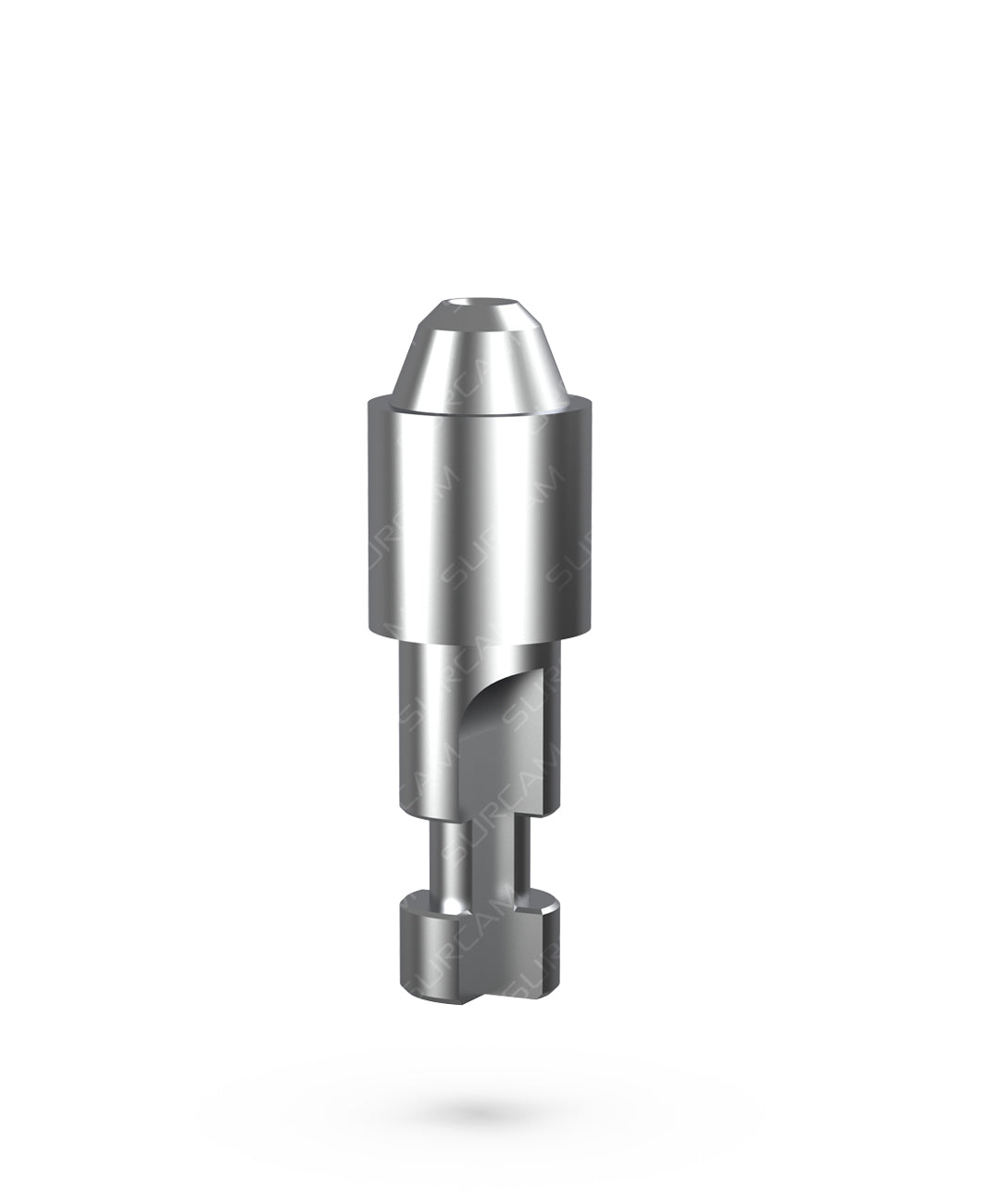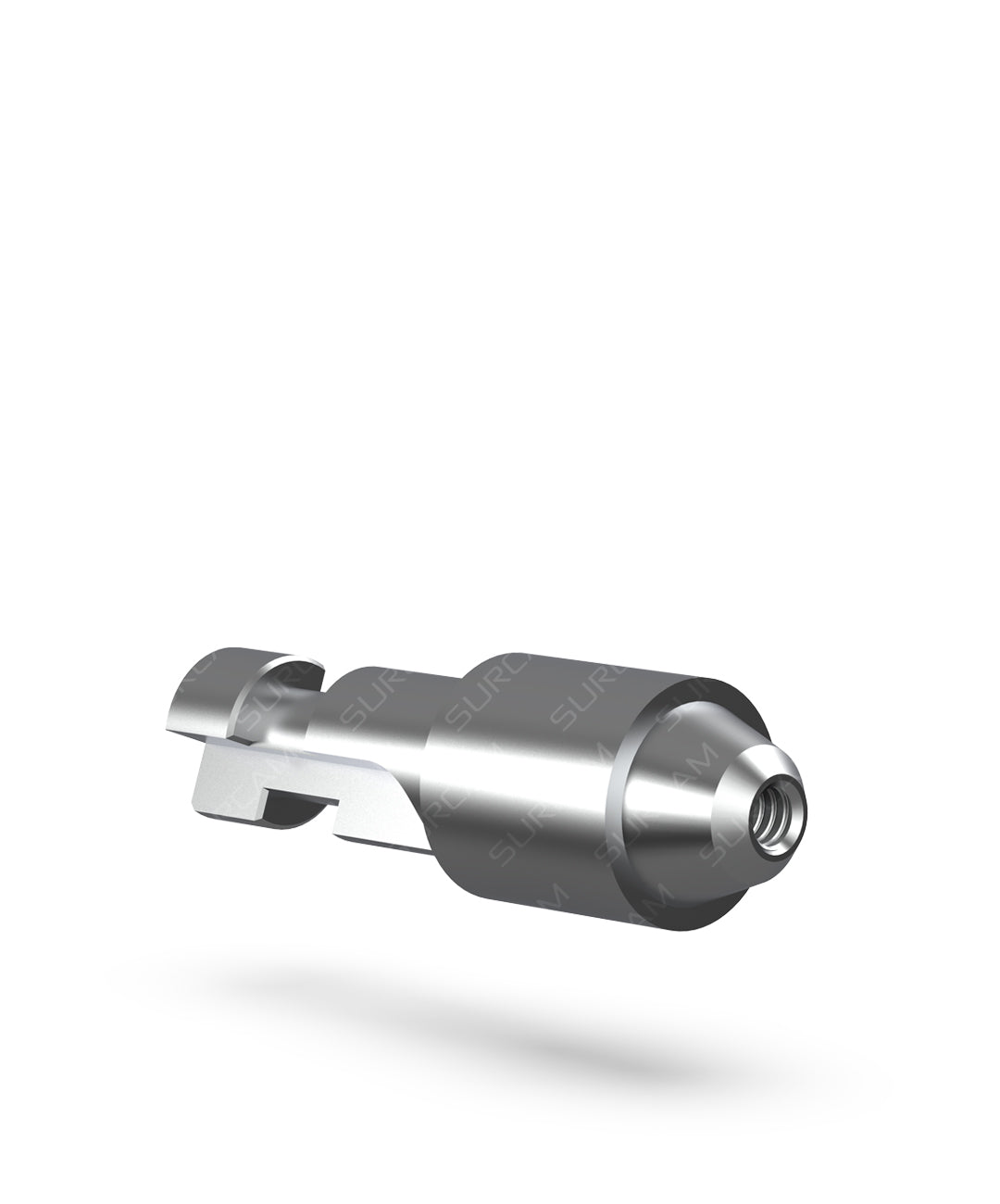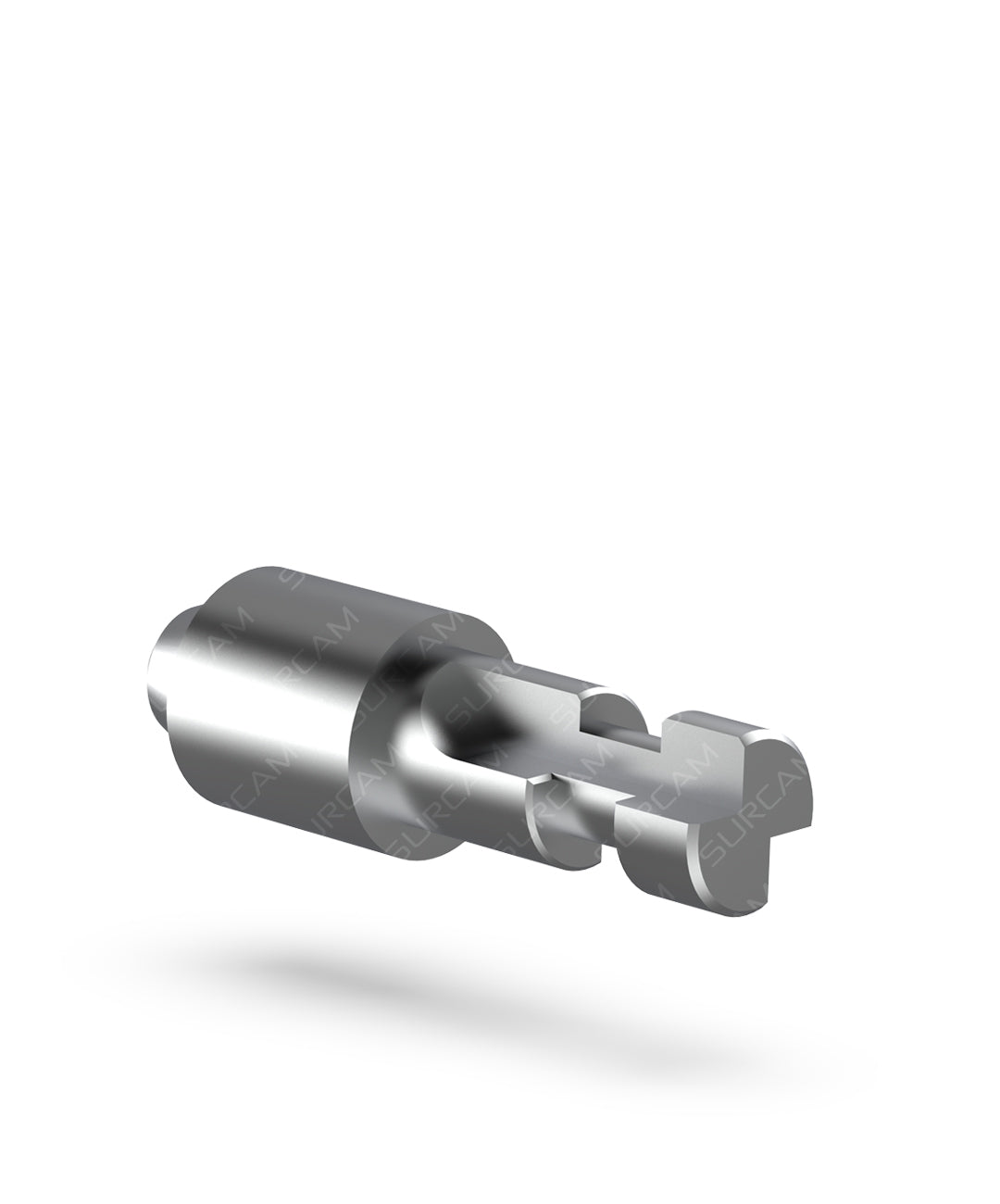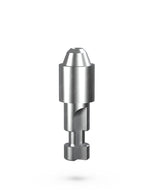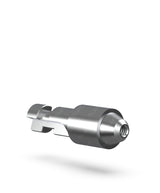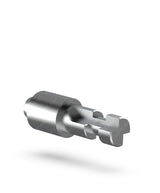Product Details
Titanium lab analog for general Multi-Unit systems - accurate model indexing & stable seating
The Surcam Analog For General Multi-Unit replicates the multi-unit abutment interface in 3D-printed or milled models, enabling precise CAD/CAM fabrication of screw-retained provisional and definitive restorations. Machined from Titanium Grade 5 (Ti-6Al-4V), it delivers durable, repeatable indexing and seating that supports full-arch and segmental workflows with predictable fit.
Includes: 1× Analog.
Compatibility: General Multi-Unit system (verify geometry before use).
Benefits
-
Model accuracy – Tight tolerances help capture true position/angulation for passive frameworks.
-
Stable seating – Secure lock-in to printed/milled sockets reduces rotation during lab procedures.
-
CAD/CAM ready – Works seamlessly with IOS → design → milling for bridges and full-arch bars.
-
Durable titanium – Grade 5 construction withstands repeated lab handling.
-
Workflow versatility – Suitable for single, segmental, and full-arch situations.
Product Details
-
Interface: General Multi-Unit
-
Material: Titanium Grade 5 (Ti-6Al-4V)
-
Pack Contents: 1× Analog
-
Use: Laboratory/model use only (not for intraoral placement)
Specifications
-
Seats into 3D-printed or milled model sockets; verify full seating & rotational index
-
Follow your CAD/CAM library for socket dimensions and tolerances
-
Clean/inspect seating surfaces to maintain model precision
-
Compatible with standard screw-retained prosthetic workflows
Why Choose Surcam Analogs?
-
Consistent fit and indexing for predictable CAD/CAM outcomes
-
Grade 5 titanium longevity and dimensional stability
-
Smooth integration into modern digital lab processes
Surcam Analogs FAQs
Which systems is this analog compatible with?
General Multi-Unit interfaces. Verify the analog geometry against your multi-unit components before use.
Is this analog intended for intraoral use?
No. It is lab-only, for printed or milled models to support CAD/CAM fabrication.
Does it work with different 3D printers and resins?
Yes. It is printer-agnostic—use the correct library and ensure sockets are produced to specification.
How do I ensure accurate seating and indexing?
Confirm full seating and rotational index in the model socket; follow your library’s tolerances and lab protocol.
What prosthetics can be fabricated with this analog?
Screw-retained single units, short-span bridges, and full-arch frameworks produced via CAD/CAM from intraoral scans.



















